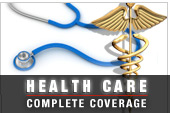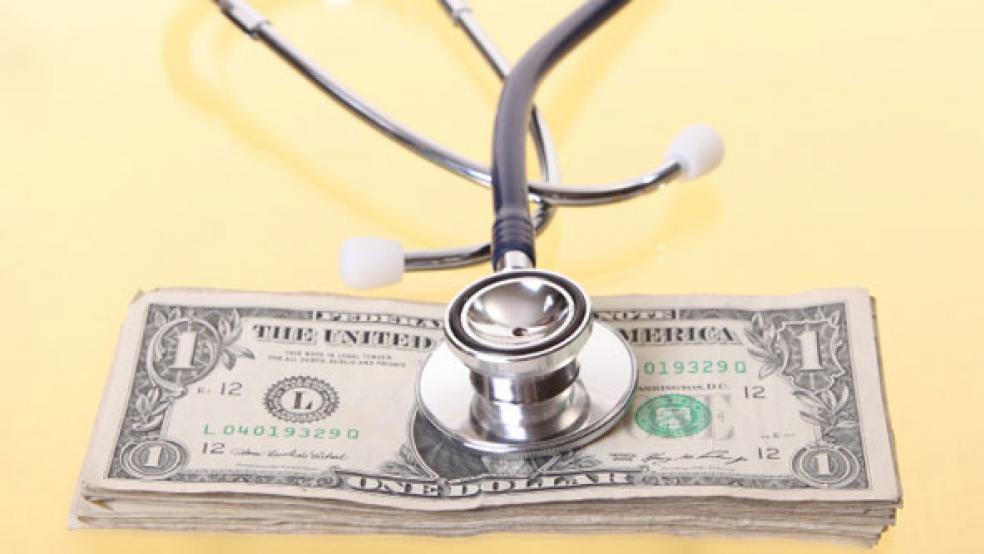Add “upcoding” to the long list of perverse incentives created by fee-for-service medicine that are undermining efforts at controlling health care costs in this country.
The latest example came to light this week in a front page New York Times exposé of billing practices at HCA, the Florida-based chain of 163 for-profit hospitals. In 2008, the company introduced a new coding and billing system that over the two years that tripled the share of emergency room visits that received the two highest reimbursement rates paid by Medicare.

In other words, almost overnight, people visiting its emergency rooms got a lot sicker. Numerous government reports and whistleblower lawsuits refer to the practice as upcoding. In 2000 HCA paid $840 million – at the time the largest payment for alleged fraud in U.S. history – to settle claims it had overcharged Medicare for upcoding pneumonia patients.
While the story focused on one highly visible chain – HCA was founded by relatives of former Senator Bill Frist of Tennessee, was once run by Florida Governor Rick Scott and is currently partly owned by Bain Capital, Mitt Romney’s former firm – the data in the story suggest HCA was hardly alone. Over those same two years, which coincided with an economic slump that curtailed rapid growth in health care spending, the percentage of emergency room patients receiving Medicare’s top two billing codes went from 58 percent to 74 percent – just two percentage points less than at HCA.
A company spokesman told The Times HCA was aware that it might be putting too many patients in the higher paying categories. So it adjusted its coding to, as the paper put it, “bring the company in line with the national average.”
TYPICAL PRACTICES?
Upcoding in HCA’s emergency rooms appears typical of what takes place in many corners of U.S. medicine whenever final fees depend billable services after a diagnosis. Since a more serious diagnosis allows hospitals and other providers to deploy a greater number of more costly services, the system creates a powerful incentive for providers, especially those that operate as for-profit businesses, to shift patients into those sicker categories.
“This is another example of how the way we pay for medical care is very vulnerable to profit maximization by providers,” said Paul Ginsburg, president of the Center for Studying Health System Change. “It’s a fee-for-service issue.”
The problem appears to be worse at for-profit providers. A 2004 study by Dartmouth University researchers that looked at hospital upcoding after the “diagnostic related group” or DRG system for reimbursement was introduced more than 30 years ago found that between 1989 and 1996, the share of pneumonia and respiratory infections receiving the most generous DRGs rose 10 percentage points at non-profit hospitals and 23 percentage points at for-profit hospitals.
Not every case of upcoding was fraud, of course. When Medicare introduced the DRG system, it assumed there would be a certain level of upcoding because hospitals did such a poor job of keeping track of patients who developed new conditions after the initial intake. The agency lowered the bundled rates to offset the expected diagnosis creep.
But the possibility of fraudulent upcoding has been a long-standing concern of Medicare watchdogs. A 2010 Health and Human Services inspector general’s report found that elderly patients requiring extensive rehabilitation therapy in skilled nursing facilities increased from 17 to 28 percent of the population between 2006 and 2008, even though the age and diagnoses of patients at admission had been unchanged.
Moreover, for-profit nursing facility chains were far more likely to recommend more extensive services. Thirty-two percent of patients at the for-profit facilities were given “ultra high therapy,” compared to 18 percent at non-profits and 13 percent at government-owned skilled nursing facilities, according to the HHS report.
There is also evidence to suggest there was substantial upcoding after Medicare began its experiment with managed care privatization, which Mitt Romney and Paul Ryan would like to expand under a voucher program – or premium support, as they call it. When President George W. Bush in 2003 announced that payments for beneficiaries in Medicare Advantage plans would be adjusted to reflect their medical conditions, the reported health status of those in the plans declined sharply over the next 12 months.
RELATED: No Matter Who Wins, Health Care Rationing Is Coming
Moreover, the “risk scores” for seniors in the Medicare Advantage plans rose much more quickly over the next two years than those in traditional Medicare, according to an analysis by HHS. “Upcoding is rendering an already imperfect risk adjustment system even less able to adjust for differences in health status between enrollees in private plans and those in traditional Medicare,” the Center for Budget and Policy Priorities said in its analysis of the report. The Affordable Care Act, better known as Obamacare, eliminated the extra payments that went to Medicare Advantage plans because of the upcoding.
The joint HHS and Department of Justice task force on Medicare fraud has targeted upcoding in its efforts to eliminate unnecessary waste in the system. Last March, Illinois-based LifeWatch Services agreed to reimburse the government $18.5 million after two former salesmen accused the firm of charging Medicare for automated cardiac rhythm monitoring systems for patients who only had mild arrhythmias and would not normally be eligible for the expensive cell phone-based service. The difference in cost to Medicare was $500 to $1,000 per patient compared to manual monitoring.
The government also accused Baltimore’s Good Samaritan Hospital, part of the Medstar Health System, of diagnosing hundreds of patients over a four-year period with malnutrition without justification. “GSH employees used leading questions so that the physician would answer that the patient was malnourished, which was the result GSH wanted to achieve,” the complaint alleged. Though the hospital denied the charge, earlier this year it paid nearly $1 million to settle the suit.
The Center for Medicare and Medicaid Services and the private insurance industry are experimenting with a number of payment reforms that they hope will reduce incentives for upcoding. These include bundled payments for episodes of care administered by provider groups and pay-for-performance for physicians.
But, like DRGs, even these changes can be gamed, experts warned.
“Bundled payment is also subject to coding,” said Ginsburg. “There isn’t a silver bullet for addressing that.”


